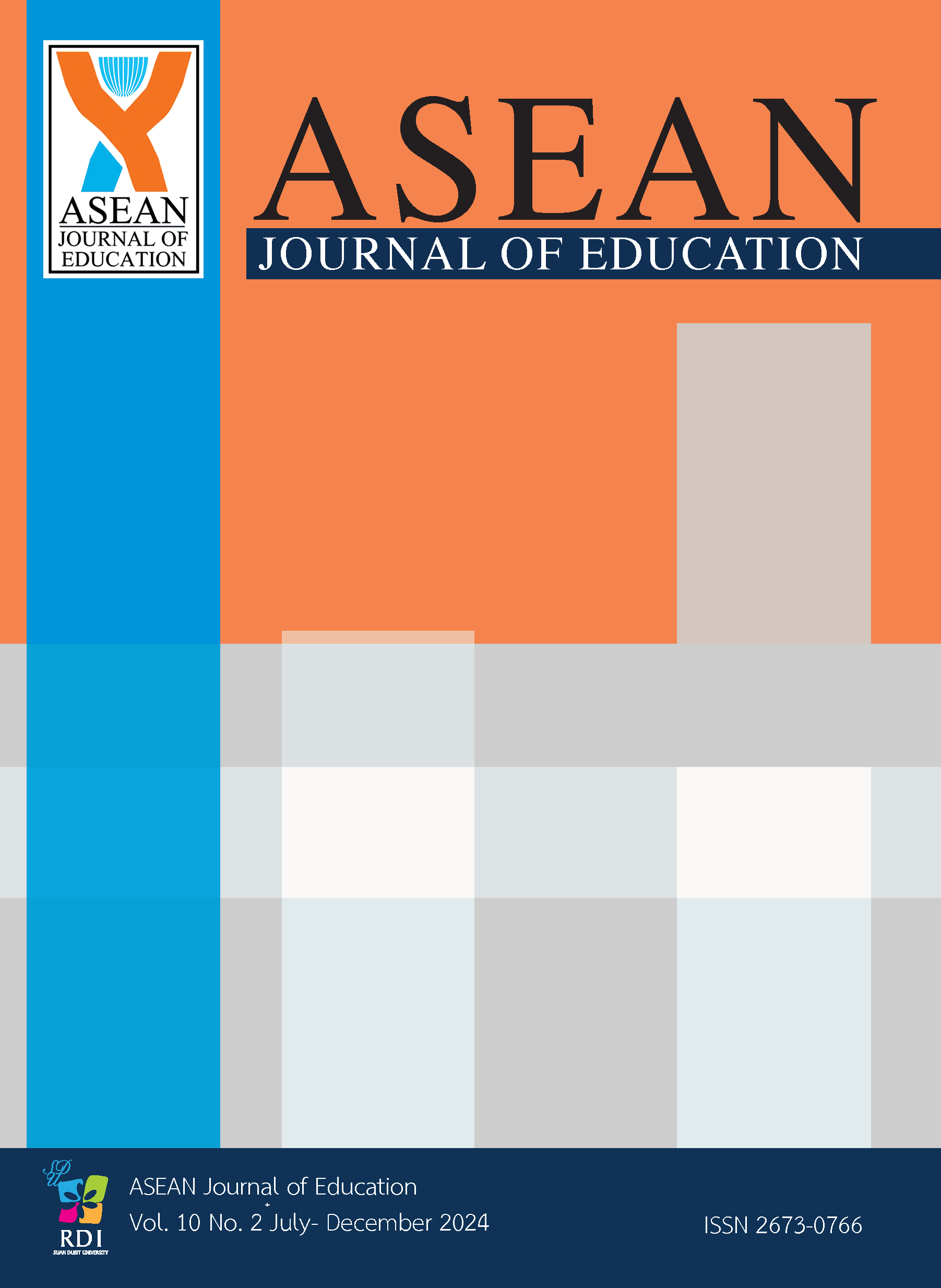Pre-Reading Motivation in a Flipped Classroom: A Case Study of Gifted Science and Mathematics Students in Thailand
Keywords:
Flipped classroom, Learning motivation, Active learning, Social studiesAbstract
The flipped classroom method often encounters the issue of students not preparing themselves before class. The objectives of this research are to determine how to encourage gifted science and mathematics students to read a book before social studies classes and to understand their motivation to do so. This study employs a pre-experimental design, specifically a one-group pre-posttest experimental design. Data were collected using questionnaires and interviews. Quantitative data analysis involved t-tests and descriptive statistics, while qualitative data were analyzed through content analysis. The findings revealed that, after students were assigned specific tasks to complete before class, their pre-class reading scores significantly increased at the .05 level of statistical significance. Qualitative data indicated that extrinsic motivation, particularly through marking and grading, plays a crucial role in
promoting pre-class reading, whereas intrinsic motivation had a lesser influence. Schools and teachers can further support both extrinsic and intrinsic motivations beneficial to pre-class reading through strategies such as group quizzes, learning guidelines, providing adequate free time, and creating conducive learning spaces bfor preparation.
References
Alten, D., Phielix, C., Janssen, J., & Kester, L. (2019). Effects of flipping the classroom on learning outcomes and satisfaction: A meta-analysis. Educational Research Review, 28, 100281.
Bardach, L., Oczlon, S., Pietschnig, J., & Lüftenegger, M. (2020). Has achievement goal theory been right? A meta-analysis of the relation between goal structures and personal achievement goals. Journal of Educational Psychology, 112, 1197-1220.
Çelçima, D. (2015). The Motivation of Adolescents. Journal of Educational and Social Research, 5, 187.
Chung, J. H. J. (2021). “We Participate, Silently”: Explicating Thai University Students’ Perceptions of Their Classroom Participation and Communication. Qualitative Research in Education, 10(1), 62-87.
Gnambs, T., & Hanfstingl, B. (2016). The decline of academic motivation during adolescence: an accelerated longitudinal cohort analysis on the effect of psychological need satisfaction. Educational Psychology, 36, 1691 - 1705.
Graham, S. H., & Weiner, B. (1996). Theory and principle of motivation. Handbook of educational psychology. New York: Macmillan.
Heiner, C. E., Banet, A. I., & Wieman, C. (2014). Preparing students for class: How to get 80% of students reading the textbook before class. American Journal of Physics, 82(10), 989-996.
Michel, N., Cater, J. J., & Varela, O. E. (2009). Active versus passive teaching styles: An empirical study of student learning outcomes. Human Resource Development Quarterly, 20, 397-418.
Nikitskaya, M. G. (2022). Goals of academic achievements and personality orientation in adolescents' academic motivation structs. Psychological and pedagogical research, 14(2), 19-31.
Nouri, J. (2016). The flipped classroom: for active, effective and increased learning – especially for low achievers. International Journal of Educational Technology in Higher Education, 13(1), 33.
Prince, M. (2004). Does Active Learning Work? A Review. Journal of Engineering Education, 93(3), 223-231.
Saavedra, A., & Opfer, V. D. (2012). Teaching and Learning 21st Century Skills: Lesson from the Learning Science A Global Cities Educational Network Report. (Asia Society). Phi Delta Kappan, 94(2), 8 – 13.
Scott, C. L. (2015). The futures of learning 3: What kind of pedagogies for the 21st century?. Paris: UNESCO Education Research and Foresight. Retrieved from https://unesdoc.unesco.org/ark:/48223/pf0000243126
Tolley, L. M., Johnson, L., & Koszalka, A. T. (2012). An intervention study of instructional methods and student engagement in large classes in Thailand. International Journal of Educational Research, 53, 381-393.
Uzunboylu, H., & Karagozlu, D. (2015). Flipped classroom: A review of recent literature. World Journal on Educational Technology, 7(2), 142-147.
Vallin, M., & Åkesson, S. (2012). Learning environment in Thailand: A case study regarding teaching methods and motivation in a Thai. Sweden: Linnéuniversitetet, School of education, psychology & sport science. Retrieved from http://www.diva-portal.se/smash/get/diva2:603432/FULLTEXT01.pdf
Xiu, Y., & Thompson, P. (2020). Flipped university class: A study of motivation and learning. Journal of Information Technology Education: Research, 19, 41-63.
Zainuddin, Z., & Halili, S. H. (2016). Flipped Classroom Research and Trends from Different Fields of Study. The International Review of Research in Open and Distributed Learning, 17(3), 313-340.
Downloads
Published
How to Cite
Issue
Section
License
Copyright (c) 2024 Suan Dusit University

This work is licensed under a Creative Commons Attribution-NonCommercial-NoDerivatives 4.0 International License.
1 All articles will undergo a formal peer-review. A panel of experts from within or without the university will examine the article; approval from a minimum of two experts is required for publication. Revisions posed by the experts must be completed by the research prior to publication.
2 Once published in the ASEAN Journal of Education, the article becomes intellectual property of Suan Dusit University. Duplication, in full or part, requires permission from Suan Dusit University.
3 Excluding errors incurred during printing, author(s) are responsible for the content of their articles.






